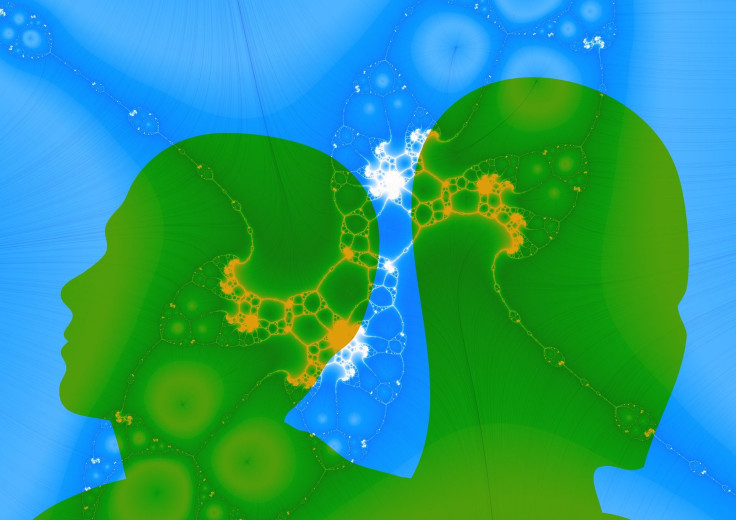Anxious People Aren’t Just ‘Playing It Safe’: They Have Completely Different Perceptions Of The World

The brains of anxiety sufferers may have completely different wiring than people who don’t have the mental disorder, according to a new study out of the Weizmann Institute of Science in Israel. People with an anxiety disorder may have already felt somewhat like a worrisome outsider to the average laid-back person, but the research backs this up by delving into the brain mechanisms that make them feel “different.”
It turns out that something known as overgeneralization is to blame for the unique brain of anxiety sufferers. Humans and animals are wired to respond to stressful stimuli or potential dangers as a survival mechanism, but overgeneralization occurs when a person can’t differentiate from a stressful stimuli and a neutral, non-stressful one.
An anxious person’s response to something as innocent as coming across a mysterious gifted cupcake on their work desk would typically be one of stress and worry. The cupcake is seen as a mild threat, sending their brains into a spiral of paranoid thinking. Why would someone put a cupcake there? Is someone trying to poison me? Where has this cupcake been? A non-anxious person, meanwhile, will eat the cupcake without a stressful thought, and perhaps even see it as a pleasant stimuli. As the authors of a 2015 study wrote, “the overgeneralization of fear to harmless stimuli or situations is a burden to daily life and characteristic of post-traumatic stress disorder and other anxiety disorders.”
Perceptual Inability To Discriminate
In the latest study, the researchers came to a similar conclusion after watching participants distinguish between different sounds of tones, finding that anxious people had a "perceptual inability to discriminate." A group of participants with anxiety were trained to associate three different tones with either money loss, money gain, or no consequence. Afterward, they were asked to listen to 15 different tones and distinguish whether they had heard any of the tones during the training. If they were right, they were given money as a reward.
People with anxiety were more likely to associate a new tone with a previous tone that had some level of emotional response attached to it — either money loss or gain. As a result, anxiety sufferers tended to associate more new tones with money loss or gain, choosing poorly compared to non-anxious subjects. During the experiment, the researchers also measured brain responses with functional magnetic resonance images (fMRIs). They found that anxious people had different responses in the amygdala than non-anxious people. In the past, increased activity in the amygdala, which is involved in the regulation of anxiety, emotional behavior, and motivation, has been associated with panic attacks and anxiety disorders.
The researchers label the changes in anxiety brains as “plastic,” referring to the brain’s flexibility to grow, build, or decrease neural networks based on lifestyle and mindset. “We show that in patients with anxiety, emotional experience induces plasticity in brain circuits that lasts after the experience is over,” said Rony Paz of the Weizmann Institute and an author of the study, in a press release. “Such plastic changes occur in primary circuits that later mediate the response to new stimuli, resulting in an inability to discriminate between the original experienced stimulus and a new similar stimulus. Therefore, anxiety patients respond emotionally to such new stimuli as well, resulting in anxiety even in apparently irrelevant new situations.” But perhaps the most telling fact is that anxiety sufferers “cannot control this, as it is a perceptual inability to discriminate.”
Anxiety affects different parts of the brain of course, and overgeneralization isn’t the only feature of an anxious person’s brain. A lot occurs in the brain during anxiety or in more acute panic attacks, much of which scientists still don’t fully understand. It also depends on the type of anxiety disorder you have; there's generalized anxiety disorder, panic disorder, obsessive-compulsive disorder, and social anxiety disorder.
Some researchers actually believe that the brains of anxious people are better equipped to respond to danger, as they’re more sensitive to threat signals. Indeed, the occasional activation of the fight-or-flight response is “beneficial evolutionarily,” Paz said in the press release. “Yet an emotional event, even minor sometimes, can induce brain changes that might lead to full-blown anxiety.”
Fortunately, anxiety can be cured through lifestyle changes, cognitive behavioral therapy, and sometimes medication. A 2014 study found that exercise actually changed people’s outlooks on life, particularly for those with social anxiety. So if you’ve begun to feel a little overwhelmed by your anxious brain, implement an exercise schedule and allow your brain to build new channels and associations.
Source: Laufer O, Israeli D, Paz R. Behavioral and Neural Mechanisms of Overgeneralization in Anxiety. Current Biology, 2016.



























